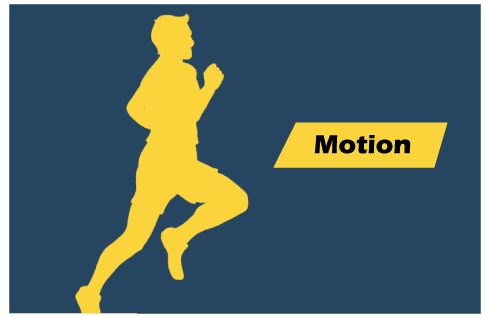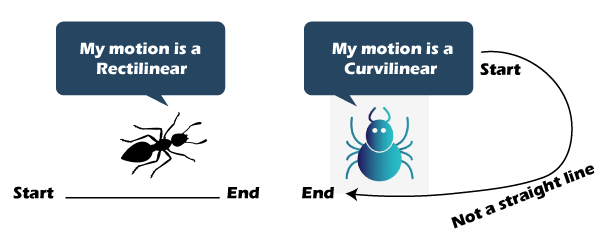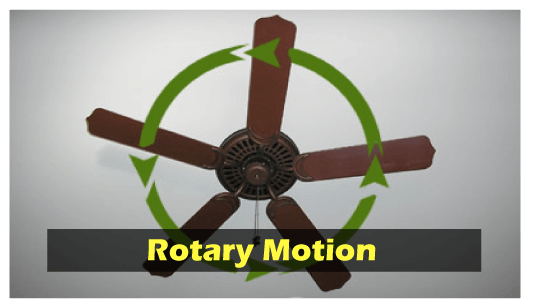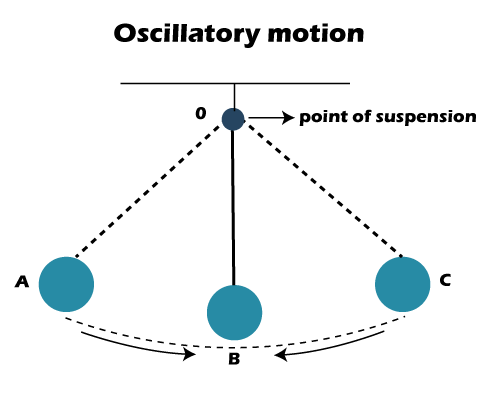Types of MotionEverything in this world is naturally in a continuous state of movement. Specifically, the Earth seems to be in a stable state; however, it is also somewhat in a motion state. That makes it clear that everything present on Earth is also in motion. Even though we don't experience particular objects' movement, they are in motion concerning something or someone. Typically, we notice that different objects move in different ways. Therefore, there are different types of motion primarily based on the nature of the movement. In this article, we are discussing all the common types of motion and their definitions. Before we discuss various motion types, let us first briefly understand the definition of motion, including the related terms used to define motion. What is a Motion?Motion is defined as the change in an object's position with respect to time. Technically, each object in this universe is in motion. Even the universe itself is in continual motion. The motion can be slow or fast, but there will a motion always. However, when an object is at rest (not moving), we call it stationary. When we say that the object is in motion, it is always said concerning any other object. For instance, when we see a person walking on the road, we say that a person is in motion. In this case, the person is generally moving with respect to stationary objects such as trees, poles, etc. Besides, when we see a person sleeping on the bed, we say a person is in a rest state (not in motion). It is because the person is stationary with respect to the bed or some other objects around him. But as we know that the Earth is in motion, and so technically, everything is in motion. The examples explained here also clarify that the same object can be at rest and in motion in different states or times. 
Motion is mainly defined using the following terms:
All these quantities help in describing the change in the position of objects between particular points. Some General Examples of MotionThe following are some general life examples of motion, which will help us to understand motion clearly:
There are various other everyday-life examples of motion. Let us now understand the different types of motion, which will help us distinguish the motion types in different categories. Types of MotionDifferent particles usually have different movement styles. Sometimes, the same particle may follow different styles. For instance, an object may move in a straight path, circular path, or follow any other random path. According to the different paths or ways of movements, the motion is classified into the different type, such as:
What is Linear Motion?Motion is linear when all the parts of an object move from one place to another at a particular time. It is important to note that if an object moves along the perfectly circular path, an object's motion is not linear. A linear motion has many significant applications in the field of robotic, automation, manufacturing, etc. The high use of this type of motion is seen in linear actuators. Some common examples of linear motion include the followings:
Linear motion is further classified into the following two types: Rectilinear Motion When an object in linear motion moves towards a straight line's path, an object's motion is called a rectilinear motion. A vehicle moving on a straight road and a train moving on a straight-line track are few examples of rectilinear motion. Curvilinear Motion When an object in linear motion moves along the curved path, an object's motion is called a curvilinear motion. A vehicle taking a turn and an object threw up at any angle are few examples of curvilinear motion. 
What is Rotatory Motion?The rotatory motion refers to a type of motion in which different particles of an object move in a circular path and travel different distances at any specific time intervals. In a rotatory motion, the object typically moves or rotates on its axis. It is also sometimes referred to as the rotational motion and rotary motion. Like linear actuators, rotary actuators are also widespread and can be seen in electric, hydraulic, and pneumatic options. The Earth is constantly rotating on its axis around the sun is the best general-life example of rotatory motion. Other common examples include the followings:

What is Oscillatory Motion?An oscillatory motion refers to a type of motion in which an object moves or oscillates around its mean position. This means that the object repeats the cycle of motion around its mean position. More specifically, it is the motion of an object that moves like it is doing front and back oscillation repeatedly at certain time intervals. The oscillatory motion is sometimes also known as oscillating motion. The movement of an object is termed oscillations. The motion of a pendulum of a wall clock is the best example of an oscillatory motion. In particular, a pendulum repeats its motion at a specific period without actually displacing it from its position. Although it is somewhat stationary, it is in oscillatory motion. Some other common examples of this type of motion include the followings:

What is Periodic Motion?A periodic motion refers to a type of motion in objects that typically repeats itself at equal time intervals. Some examples of objects undergoing periodic motion include the bouncing ball, a moving swing, water waves, a rocking chair, etc. Apart from this, motions that do not repeat are called non-periodic or may fall under other motion types. For instance, the birds gliding across the sky where birds' motion is non-periodic and may usually fall under the linear motion category. 
Examples that may have more than one type of motionThere is nothing wrong with an object having more than one type of motion. It is possible. Let us look at some examples and understand how this can be possible:
Some other Classifications of MotionApart from the types mentioned above, we can also distinguish motions according to directions and the state of motion: Classification of Motion According to DirectionsThere are mainly three types of motion depending on the directions, such as:
Classifications of Motion According to StateThere are mainly two types of motion depending on the state of motion, such as:
Next TopicTypes of Resistors
|
 For Videos Join Our Youtube Channel: Join Now
For Videos Join Our Youtube Channel: Join Now
Feedback
- Send your Feedback to [email protected]
Help Others, Please Share









